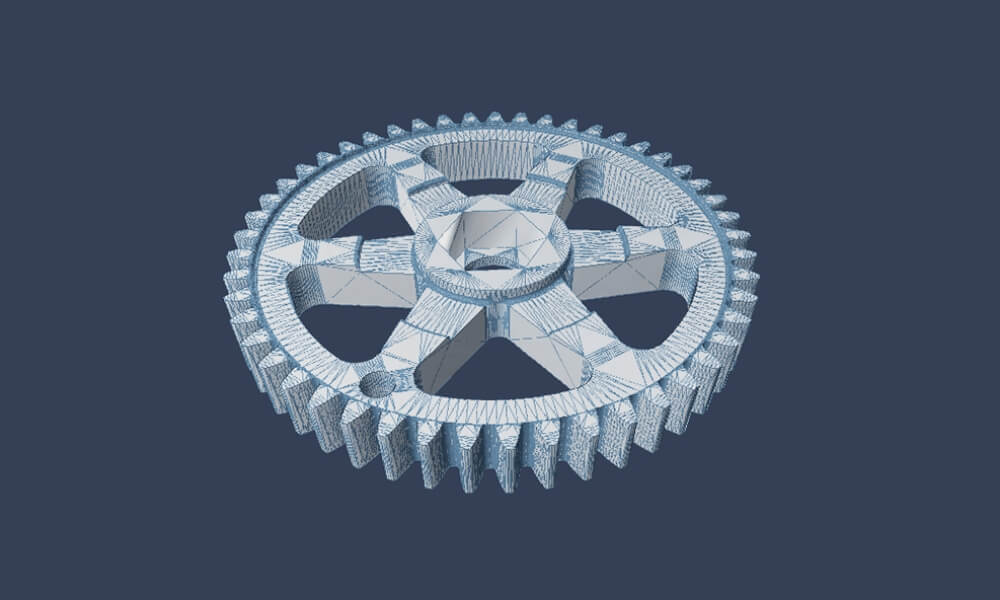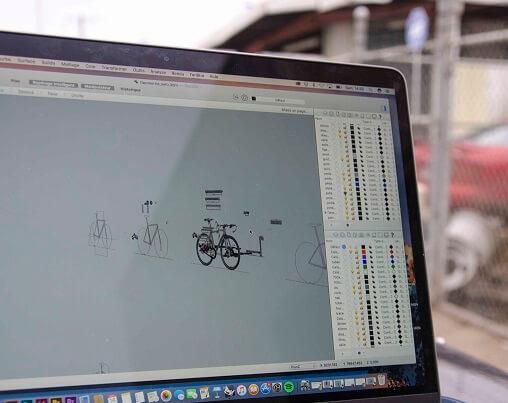Top 4 of the best 3D printer file formats
Posted By Kat Plewa on Oct 17, 2018 | 0 comments
It this blog post we will talk about the most commonly used 3D printer file formats. As the choices are numerous it is essential for you to know what are your production needs. Are all the 3D file formats printable? And which 3D printer file format is the best for you? Let’s find out.
Choosing the right 3D printer file format is essential as it will decide what information the 3D printer will receive. We will introduce you to the best file formats and explain the features of each one to make it easier for you to prepare the perfect file for 3D printing.
What exactly is a 3D printer file?
A 3D printer file is a way to store information about your 3D model for the 3D printer to read. All 3D printer files contain the data about the shape of your 3D model, their geometry. Some files also present also more details such as color, texture, and materials. There are plenty of choices for 3D printer file formats, just on our online 3D printing service website we accept over 30 different types.
Most of the 3D file formats are printable. However, it’s essential to remember that not all 3D file formats are 3D printer file formats. Generally, 3D files can also store animations or visualizations, which of course can’t be printed. 3D printer file formats are used for Additive Manufacturing purposes only. What else makes them non-printable? Find out with our blog post on that topic. And to find out if your 3D file is well prepared for 3D printing, discover our answers to the top 6 questions on that subject.
You should also make the decision on which 3D printer file format you would like to use as not all the 3D printing software use the same file formats. You might end up finishing the design process of your parts and being unable to save your work in the needed file format. To avoid such a situation, keep on reading and make the best choice for your production.
The best options for 3D printer file formats
The father of all 3D file formats: STL
The STL (Standard Triangle Language or ‘’Standard Tessellation Language’’) 3D printer file format is the very first file for 3D printing. Developed by Chuck Hull in 1987 still serves its purposes after 30 years. It’s the most commonly used 3D printer file format across the globe. It easily became the standard file for 3D printing.
STL file saves your 3D model as a surface of geometrical shapes, turning it into a triangular mesh. However, it can not carry the information about your 3D model’s color or texture. This 3D printer file format assures your model has no holes or overlaps, which is essential for 3D printing. This process is called ‘’tessellation’’ as the 3D model is tiled with geometrical shapes.
It’s essential to keep this process in mind as having too little of those ‘’tiles’’ will affect your 3D print, it might not be as smooth as the 3D model. It is related to the STL file resolution, which we dedicated a blog post to.
This 3D printer file format was very quickly and easily adapted by all the 3D modeling software, slicers, and 3D printers. Some of the software even went as far as giving you the option to not only ‘’save as…’’ but straight ‘’Save .STL’’. STL is the standard file for saving any 3D model to send it for 3D printing.
For all those reasons we highly recommend using STL format. This 3D printer file format might not contain color information, but in most cases, that’s not an issue. You can still choose the color of the material you will 3D print your model with. And for engineering parts or fully functional prototypes color is not the most important part, it’s reliability and that’s what STL will give you.
It might happen that you have some problems with saving your 3D model as an STL. Check out our 6 most common FAQ about fixing STL files. STL format is such a popular and widely used 3D printer file that it has its own range of free editors to edit and repair them.
To provide you with the best online 3D printing service we also have our own several automatic STL file repair tools available to you at any time on our website. All you have to do is to upload your file and you can find there some editors such as hollowing or part thickening. Then we 3D print your parts and send them straight to your door.
If you want to learn even more about this 3D printer file format read up our 9 facts about STL and if you are looking for more specialized information about how you can repair it, follow up on how to fix STL files with Meshlab software.
STL’s biggest competitor: OBJ file format
OBJ (Object) is the second most used 3D printer file format in the 3D printing world. Why, you might wonder? Because it stores the color, material and texture data allowing for multicolor prints. At first, the file format was used for 3D graphics and was later adopted by the Additive Manufacturing industry once the printers developed and became capable of color 3D printing.
OBJ file format also gives the option to choose the way the surface of your object is translated into a 3D printable model. You can use tessellation like with the STL files, but OBJ also gives you more advanced options such as free-form curves and surfaces.
However, there is a reason why STL 3D printer file format is still much more popular than OBJ. The latter one is much more complex and repairing it isn’t as easy. Moreover, to keep the color information OBJ file comes with an MTL file and it can be hard to keep track if transferring both files.
This type of 3D printer files is more used in engineering industries which involve the highest level of precision and accuracy such as aerospace and automotive where a hair-thin difference can break the whole component. The Additive Manufacturing file format is beneficial for very complex designs, however, that also means a much larger file which can again cause problems moving it.
OBJ file format is open source licensed which made it easier to adopt by the software and hardware manufacturers than other multicolor 3D printer file formats such as COLLADA or FBX. However, at Sculpteo we accept all those file formats for 3D printing.
At Sculpteo we keep up with the most innovative 3D printing technologies and of course, you can 3D print in full color with us. We provide you with a wide range of 390 000 colors to give your 3D model the most realistic look. Discover the endless 3D printing color technology now!
The meant to be STL 2.0: AMF file format
AMF (Advanced Module File) was first introduced by ASTM in 2013. It is the first 3D printer file dedicated just for the purpose to catch up with the evolving Additive Manufacturing technology. It stores the information about the geometry of your 3D model, color, materials, lattices, duplicates, and orientation.
AMF file works just like STL file turning your 3D model’s surface into a triangular mesh, but the difference is that it allows for the triangles to be curved which gives them more sleek finish. This allows using fewer shapes to describe curves which have an impact on smaller file sizes.
AMF is a good 3D printer file format, but it’s not even nearly as popular as STL format. This causes problems with 3D modeling software, slicers as well as with 3D printing it.
Microsoft development: the 3MF file format
3MF is another file format that was designed just for Additive Manufacturing needs. It was developed by Microsoft and the company really invested in the 3D printer file format: they created a special body called 3MF Consortium to work on the 3MF. The 3MF Consortium gathers the biggest names in 3D printing: Autodesk, Stratasys, Ultimaker, Siemens, HP, or GE.
3MF file format is a native Additive Manufacturing file and consists of all the necessary information: geometries, color, material, textures. It’s open source and parts of the code and even available on GitHub so everyone can contribute. So far, 3MF still hasn’t been as widely adopted as STL file, however, we give you the option to use it with our online 3D printing service.
Start importing your 3D models for 3D printing!
As you can see there are several choices and you need to ask about yourself what’s the purpose of your 3D model. OBJ file will work for highly complex engineering shapes, AMF and 3MF file formats are also good 3D printer file formats, but none of them are as easy and commonly used as STL files.
Once you make up your mind what 3D printer file format to use, don’t waste much time and simply upload your 3D model to our website as we accept over 30 types of files! And if you run into any problems at any stage of your product development process, don’t hesitate to contact us with any questions.
Don’t forget to stay on top of your game with our Newsletter and Facebook news!


 Connect with Google
Connect with Google Connect with Facebook
Connect with Facebook




